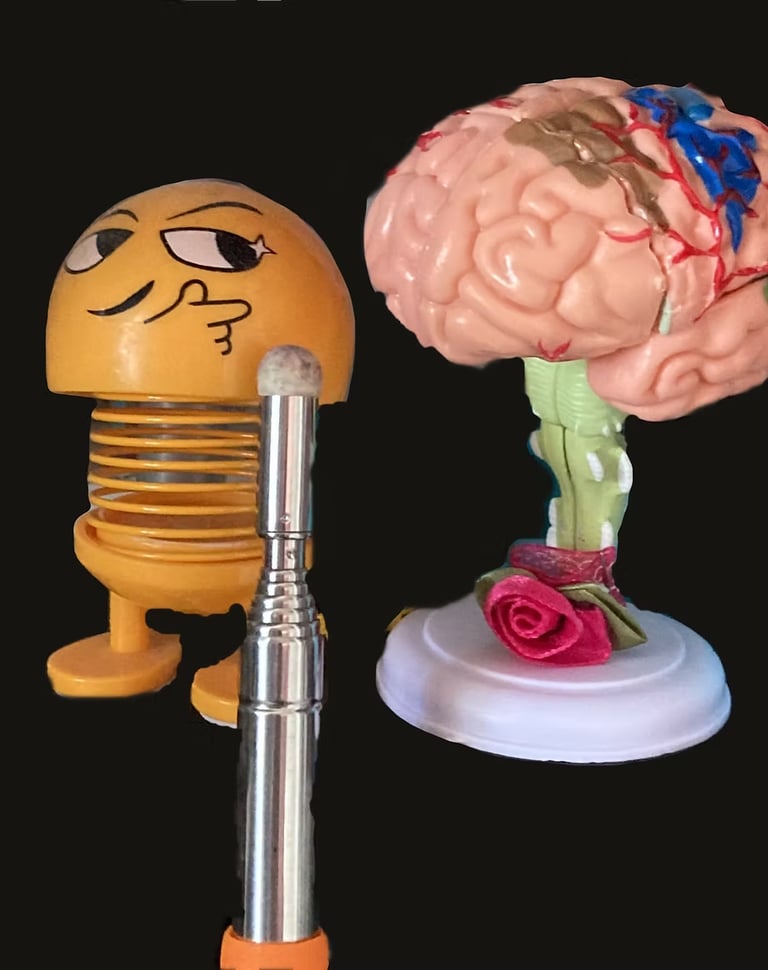
Brainspotting for Deeper Emotional Healing
What is Brainspotting?
Brainspotting is a psycho-therapeutic approach that extends beyond traditional trauma-informed therapy by directly accessing and processing emotional, psychological, and physical wounds stored in the brain and body. It utilizes the brain-body natural healing capacity, allowing for deep emotional and somatic release, often without requiring detailed recall of traumatic events. While rooted in trauma treatment, Brainspotting can be applied to a range of issues beyond PTSD, including anxiety, depression, and chronic pain.


Brainspotting for Singapore
The multicultural landscape in Singapore presents a unique context for Brainspotting practitioners. Accessing deep automatic emotional wounds, especially pains that are too difficult to be verbalised, reduces emphasis on conversational exchange. Such approach is found to be particularly valuable in cultural context where filial piety, shame, and self-sacrifice are the underlying core belief.
Moreover, the achievement-oriented and fear-of-losing-out (“Kiasu”) culture also present a unique dynamic of stress and anxiety. Many of these mental condition contributed to the performance block, be it in the academic or work settings. Working with individuals in this category reveal that much of the blocks are rooted in developmental trauma.
Evidence of effectiveness
The evidence supporting Brainspotting's effectiveness continues to grow. Brain imaging data shows that Brainspotting activates deeper brain structures, including the amygdala, hippocampus, and brainstem, while engaging prefrontal regions involved in awareness and emotional regulation. This dual activation pattern appears key to its effectiveness. Physiological measurements during sessions demonstrate shifts from sympathetic (fight-flight) to parasympathetic (rest-digest) nervous system dominance, indicating improved regulation during emotional processing.
Anecdotal evidence from our local clients (see testimonials) also provide contextual evidence that Brainspotting therapy works rapidly to restore healthy and optimum functionality in clients.
Brainspotting represents a significant advancement in treatment for mental health challenges, especially those founded in trauma from earlier life. It utilises the brain's visual processing system to access and heal psychological wounds. Instead of trying to think or talk our way out of emotional distress, Brainspotting creates a direct pathway to where that distress is stored in the brain-body system.
As neurobiologist Frank Corrigan observes, "Brainspotting appears to recruit the brain's innate capacity for self-scanning and self-healing, accessing neural networks that hold traumatic material and facilitating their integration with regulatory networks."
In the intricate dance between where we look and how we feel, Brainspotting opens a pathway to healing that words alone cannot reach, offering new possibilities for those seeking freedom from the psychological imprints of traumatic and/or unpleasant experiences.


A note on how humans learn:
Jean Piaget, a prominent cognitive developmentalist who developed the theory of cognitive development observed that we interact with the world through assimilation and accommodation. It simply means we make sense of our surrounding through our prior knowledge. As such, we can imagine how inaccurate our perception can be when we were an immature young child. Whatever deposited in us will be used to understand our external life. For example, we may have learnt that in order not to be punished by our parents or caregivers, we need to keep up with a certain pleasing behaviour. Psychologist Sigmund Freud refers to this phenomenon as coping or defence mechanism. What are we defending here? We are trying to protect the core self – who has own desires but need to be repressed because the bigger people have a louder voice.
Such pleasing behaviour can be easily carried forward into relationships in adulthood. While the act of pleasing is rewarding, it continues to deplete the core self, as the core-self must constantly need to deny its own needs. This unattended core-self, will over time become disorganised and will present itself in the myriad forms of mental health challenges and/or even disorders.
Many therapeutic methods target the disconnect between behaviours and the injured core-self. We have methods such as CBT to deal with faulty and unhelpful thinking patterns, psychoanalysis to identify the source of thinking patterns that contribute to maladaptive behaviours. However, all these methods can only deal with the information in the conscious and the pre-conscious level (based on Freud’s conceptualisation of the mind). Bassel Van de Kolk postulates that “the body keeps the scores” when working with PTSD patients who repeatedly experience intense reactions when triggered. The unconscious brain plays a big part in determining how and when we are triggered. As such, therapeutic approach that can reach into the unconscious mind to reprocess trauma materials which are ‘scored in the body’ is needed. In Gloriousruin©, we observe that Brainspotting therapy does the job of reprocessing unconscious triggers effectively.
To cite:
Kong, S. L. G. (2025a). Brainspotting for deeper emotional healing. Glorious Ruin. https://glorious-ruin.com/brainspottin
References:
Brainspotting. (2025). Research and case studies. https://brainspotting.com/about-brainspotting/research-and-case-studies/
Corrigan, F., & Grand, D. (2013). Brainspotting: Recruiting the midbrain for accessing and healing sensorimotor memories of traumatic activation. Medical Hypotheses, 80, 759–766. https://doi.org/10.1016/j.mehy.2013.03.005
Corrigan, F. M., Grand, D., & Raju, R. (2015). Brainspotting: Sustained attention, spinothalamic tracts, thalamocortical processing, and the healing of adaptive orientation truncated by traumatic experience. Medical Hypotheses, 84, 384–394. https://doi.org/10.1016/j.mehy.2015.01.028
Grand, D. (2013). Brainspotting: The revolutionary new therapy for rapid and effective change. Sounds True.
Grand, D. (2015). Case study, a cure for the yips: Brainspotting and performance blocks. Psychotherapy Networker, 39, 56–67. https://www.proquest.com/magazines/case-study-cureyips/docview/1792806829/se-2
Siegel, D. J. (2010). Mindsight: The new science of personal transformation. Bantam Books.
Van der Kolk, B. A. (2014). The body keeps the score: Brain, mind, and body in the healing of trauma. Viking.
Get in touch
+65 88935486
gloriousruin.counseling@gmail.com
© 2025. All rights reserved. Gloriousruin Counseling & Psychotherapy.
